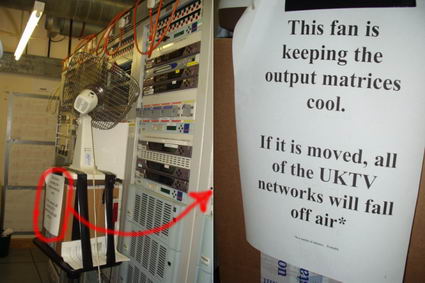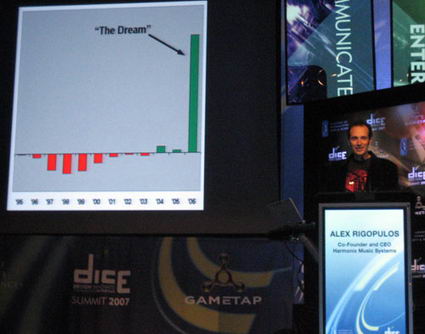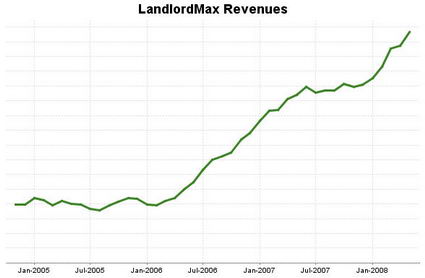The Value of Your Brand's Credibility
Intentionally or not, every brand ends up representing certain qualities. If you follow the 22 Immutable Laws of Marketing, you can only be known for one thing, and only thing, in people’s minds. Either you’re the easiest, the fastest, the cheapest, the most luxurious, or whatever, it’s one and only one thing. Although I believe this to be true in most cases, I don’t think it’s universal to all brands. For example I believe Apple is known for two things. Apple is of course known for its innovative products like the iPhone/iTouch. But more than that, Apple is also known “to just work”.
What do I mean by “to just work”? A common belief about Apple is that their stuff just works. And right out of the box! You don’t need to spend time fixing it. You don’t have to worry about viruses. You don’t have to worry about spyware. You don’t have to worry about your computer crashing. If you buy a peripheral for your Apple computer it works. It just WORKS!
Even Apple is capitalizing on this belief. We’re all familiar with the Apple commercials with the cool hip guy talking to the older, larger, and more corporate guy discussing Apple versus Windows. And of course there’s my favorite with the Windows guy repeating himself over and over about how he’s been error free for nearly a week.
The thing to note is not whether or not this is true, but rather that it’s perceived that way by the public. It’s a common belief. You can’t argue that fact. You can argue whether or not it’s true, but you can’t argue that it’s a common belief.
Many people are buying Apple’s just to avoid dealing with issues they face on their Windows systems. Of course the issues won’t disappear, well maybe for a bit, but with time as they neglect to upgrade their machines, connect them without firewall/routers, install all kinds of crapware, the issues will come back. But ignoring that fact, the common belief out there is that Apple computers just work, and that they’re immune to all these issues. And Apple hasn’t been shy to leverage this belief.
Unfortunately however all is not rosy. With their latest release of the iPhone/iTouch software, version 2.0 (and even the recent 2.0.1 upgrade), they’ve introduced a very buggy and unstable operating system. I personally own an iTouch and upgraded mine from version 1.0 to version 2.0. I can tell you that before the upgrade I maybe rebooted once or twice in total, which is great. On the same hardware, since upgrading to version 2.0 (and 2.0.1), I can’t remember a single day I haven’t had to reboot! Wow! It’s not the hardware, it’s the operating system.
I’m by far not the only one, lots and lots of people are complaining. It’s starting to be refered to as the “White Apple Logo Screen of Death.” There are issues of random reboots. Extremely long synch ups. Network connections being dropped. Battery lives being sucked incredibly fast. Very slow UI response times at random intervals (up to ten’s of seconds where the system is locked). Complete “bricking” of the machine where you need to reset it to factory defaults which takes the better part of a day! The system completely corrupting almost every time you select “Upgrade All” for your installed apps. You name it, it’s all happening. And that’s nothing compared to the outcry from the developers!
Which leads us back to our initial question, the title of this post: What’s the value of your brand’s credibility? In other words, for a brand that’s known to “just work”, what’s going to be effect of releasing a very unstable system riddled with bugs. It will greatly affect it’s credibility, and hence it will affect its revenues. The question is how much?
Luckily for Apple they’ve got a lot of brand power when it comes to just working. This release definitely didn’t just work. There are already people comparing Apple’s latest 2.0/2.0.1 iPhone/iTouch OS to a Microsoft OS release. I can’t imagine what will happen if they call version 2.1 a service pack?. But I’m getting off topic. The question is how much will it harm their credibility of just working?
In the tech community you can generally get away with one, maybe two if you’re very lucky, bad releases assuming you’ve previously been consistently good. But you better fix those bad versions very quickly. The longer it takes to release version 2.1, the bigger the hit on their credibility.
But worse yet, Apple’s “can do no wrong” credibility has definitely been hurt. “It just works” is no longer true. They pushed out a product way before it was ready for mainstream. The common theme in the online community is that version 2.0 was barely Beta worthy.
I believe they may just get away with it this time. But they’ve just played their only “Get out of Jail Free” card which means version 3.0 had better be good. Not only that, but the upcoming 2.1 update had also better offer a significant improvement in stability otherwise there will be a lot of backlash from the community. The belief that Apple’s products “just work” will no longer hold true. And that will affect them across the board. Not just for the iPhone/iTouch, but with all their products!!!
Remember many people are buying Apple computers because they’re perceived to just work. Again, whether or not this is true doesn’t matter, the perception and reputation is there in the minds of the average consumer. And if Apple loses this, then the perceived advantage Apple has over Windows will quickly erode. It will alter the OS war in a very significant way.
Branding is important. It lets people know what you or your company is all about. Branding is what differentiates you. It’s what builds loyalty. It’s what ultimately creates your evangelists. It’s defines you in the minds of other people. If you destroy the essence of who or what you are expect there to be dire consequences. Branding takes a lifetime to build and only seconds to destroy!
Permalink to this article Discussions (3)
Penny Wise Pound Foolish

For those of you who aren’t familiar with this expression, it means to be cautious (wise) with small amounts of money but wasteful (foolish) with larger amounts of money. Does it happen often? Absolutely! I have no doubt it happens in every field and speciality, but it still amazes me just how often it happens in the IT industry.
The catalyst to this post was the recent Sophisticated Cooling Apparatus post on The Daily WTF. The picture alone says a thousand words! As you see from the picture, you have a hardware setup worth thousands, tens of thousands. Not only that, but those machines had to be configured and setup which costs time and money. And I suspect they’re also running a lot of expensive custom software.
What’s truly amazing is that the biggest failure point is a $5 used fan that’s attached with a note to not remove or unplug it because the whole system will collapse. Huh?!? A massive system with large resources (not just hardware and software, but also people) is at the mercy of a basic cheap fan! It makes no sense at all.
Which lead me to search for other examples, and it didn’t take me long at all to find many other examples. It just so happens that The Daily WTF had another article rightly entitled Penny-Wise, Pound-Foolish. And that story was even more appropriate!
In it, a bank hires a $300/hour contractor to setup monitoring software to analyze traffic on $5,000,000 worth of servers. Obviously you’d think they want to get their money’s worth from the contractor, especially at that hourly rate. You’d definitely want to give him a great computer system to work with. You’d want to completely pave the way so that he can work as efficiently as possible. Or so you would think…
Unfortunately that’s not what happened. The person got assigned a completely under-performing system that could barely run Microsoft Office! Never mind actually writing any code. So here you have someone who’s at the mercy of an obsolete computer that can barely even function. What a waste of time! Considering that a newer machine could be had for under $2000, that’s less than the consultant’s daily cost. And remember, in this scenario most of his time is sitting there waiting for the computer to just respond to a command (it had 256MB of ram – not even enough to run Windows XP).
The consultant of course complained, asking for a more powerful box. He was of course denied. He got the all too common response of “let’s make due with what we have for now”. And he’s not the only one to experience this. I’ve known many developers who’ve brought in their own hardware (including myself). This is hardware they paid for themselves! It happens too often.
And by the way the above story is even worse than my summary, but I think you get the point.
So why does it happen? And especially why does it happen so often? Because in larger companies and governments it’s all about budgets. More specifically whose budgets. For example the cost of the upgraded computer for our lowly consultant would probably be coming from another budget, one where they didn’t want to spend their money on something that didn’t give them a direct ROI. There’s no bigger picture here. It’s not like at a small startup where every penny is highly valued. It doesn’t make sense, but unfortunately that’s how the game is played.
Another possibility is the process to acquire the upgraded computer. Often in big bureaucracies it’s easier to acquire new people, even very highly paid consultants, than it is to acquire simple and cheap hardware. I’ve personally seen it many times, and I’ve heard about it even more. I remember at one time spending almost the same amount of money debating the value of getting more advanced hardware as the hardware itself cost. And it was no ones fault, that’s just how it works.
And that’s why you end up with a contractor basically being paid to sit for $300/hour. The larger bureaucracies can absorb this cost because of their size.
However all is not lost. I have a simple solution to propose. Let’s assume that not everyone is an idiot required to fill in ID-10-T forms for every little request. Let’s assume people for the most part are good and want to do a good job. Let’s TRUST people.
Instead of requiring a large process to get a computer upgrade, purchase a smaller software application, etc., let’s assume they know what they’re doing and let them do it. Give them a discretionary budget to spend on things that will make their jobs more efficient. Let them maximize their performance.
Sure some people will abuse the system, but that’s nothing compared to the state we’re in now. Using the example of the $300/hour consultant, it would take a lot, and I mean a LOT of abuse to outweigh the benefits this type of trust system would give you. Even if the consultant decided to purchase a $10k computer, the company would still be ahead!
But it gets better. Remember that for each request sent out, it has to get the approval of several people. Even that $50 stick of ram needs to be approved by several people. And a process had to be put into place. In other words, getting the approval to purchase $50 of ram probably costs a LOT MORE than the $50 stick of ram. I’d bet it easily costs over $200.
Which means that if you compare the trust system to the current system, you could technically have 4 people completely abusing the system for every real request and still come out ahead! And I don’t believe for even an instance that 400% of the requests are from people trying to abuse the system.
But wait, it doesn’t end there, you also get another great benefit. If you trust people they will be more productive. Not only are you saving money, you’ll get better results. People who are trusted are more motivated. When you have a good team that gels well together, they can do great things. If you embody distrust and bureaucracy, well things come to a crawl and any and all motivation slowly dwindles to nothingness.
Trust your people. The results might surprise you.
Permalink to this article Discussions (0)
50% Discount on How to Generate Traffic Ebook!
Ever since the ebook appeared on Bits du Jour, I’ve been considered reducing the price by 50%. I also have to admit I just haven’t had the appropriate time to allocate to marketing the book, what with Interview the Pros (the traditionally published book I have coming out soon) and the upcoming major release of LandlordMax.
In any case, I’ve just reduced the price of the ebook by 50% tonight. I’m going to give that a try, at least for now. I don’t know how long it will last, so if you’ve been on the fence nows a good time to take advantage of this offer. I definitely will never reduce the price lower than it is today. If anything else, once I have some time to really market it, the price will likely increase.
Considering how affordably priced I thought it was before, now it’s an even greater deal. It’s now less than the price of going to a movie with a popcorn and drink!!! You can’t beat that. Check it out now!
Permalink to this article Discussions (2)
What's the Real Value of a Guarantee/Warranty?
Not all guarantees and warranties are worth the same. For example here at LandlordMax we guarantee that we will give you a refund within 30 days of buying LandlordMax if your not completely satisfied (remember this is after trying it for free for 30 days before purchasing it). We’ve honored this guarantee every single time!
However not all companies create guarantees with the intentions of honoring them. And even those that do might not (especially if money starts to get tight). Let me start with an example of a useless guarantee (sometimes also called a warranty – we’ll assume for this post that they are the same although there are minor differences). A year ago I bought a dehumidifier for my house, a Honeywell. With the dehumidifier came a 5 year guarantee. If anything was to go wrong, they would immediately replace the unit. All I had to do was call the 800 number listed in very large and bold letters on the box, in the manual, and so on.
As you can guess, the dehumidifier broke before the guarantee was up. It actually broke within a year, less than 20% of it’s guaranteed lifespan. So I obviously called the big bold number listed everywhere that had influenced my purchasing decision. On a side note, I ended up buying two units, one for our house and one for my mom’s house. Both units stopped working within a year, so I suspect there are some production issues.
In any case, after calling the number I discovered that Honeywell itself doesn’t actually manage the guarantees, they’ve outsourced that to another company. Not a big deal, but if you’re going to outsource it’s important to make sure the company that you use to outsource does a good job and represents you well. Turns out that the company they outsourced for was no longer around. But they gave us another number to another to call so that we could take advantage of the guarantee.
Again I took the phone and made a call so that I could exercise the guarantee. And in this second case, the company is pretty much clueless. They don’t really know what to do, so they take my name and phone number and promise to call back within a few days with some answers. Of course being busy as I am I forgot to follow-up within a few days, and I ended up calling a few weeks later. Still the same response, we’ll call you in a few days. Nothing again. It’s as if no one’s there. And this wasn’t just me, my mother, with her faulty unit, also had an identical experience.
It’s almost as though they’re trying to ignore us hoping that the problem will go away. And it did, we both eventually gave up and got ourselves other different units. But rest assured it wasn’t from Honeywell, it was from another brand. I’ll never buy another Honeywell dehumidifier again. Even though my experience with their home thermostat has been very positive this experience has really soured me on their company. I now place absolutely no value in their guaranties and warranties. They just don’t honor them. Getting rid of their obligations through attrition is very deplorable!
But who’s going to go after them to enforce the guarantee. I need a replacement now, not much later. And I’m for sure not going to spend my time chasing down a few hundred dollars that will likely never come when I could make multiples of that working on my business. So they’ve just basically got the benefits (increase in sales conversions) from their guarantee without having to enforce it. Maybe it’s different with other departments within the company, but for this dehumidifier unit they definitely own up to their claim.
The moral of this story is be careful when you make a purchasing decision, especially if you put a lot of value on the guarantee or warranty. Don’t just assume it will be honored. Look at who you’re buying from and see if they have a history of owning up to their guarantee. Check their reputation. And only then put value into the warranty.
And one last thing, the longer the duration of the warranty, the less value you should put on it. For example, the odds of a lifetime warranty being honored after 20+ years of purchase are pretty low. They’re assuming you’ll have moved on, lost your receipts, there is no equivalent replacement unit, or maybe even that the company might not be there anymore. I personally won’t trust anything beyond a 5 year guarantee, and even than my trust is limited. For example you can be pretty confident that most car manufacturers will honor their warranties. But I wouldn’t put any weight in a $40 coffee maker 20 year guarantee. And is it even worth your time to follow through with a $40 guarantee after 15 years…
Permalink to this article Discussions (0)
The Secret to Making ANY Computer Safe
Have you ever been at someone else’s house and needed to use their computer to quickly check something on the internet but where worried about the security of their system? If it was infected with viruses, spyware, or what have you? What about using your credit card to buy something. What if you’re on vacation and needed to use it for business purposes, or just to quickly check something within your bank account?
I can tell you that this completely terrifies me. I’ve seen way too many computers completely infected with garbage. Computers that I wouldn’t even do anything at all on, not even save a text document for fear of keystroke loggers.
Yes it can be that bad! Less than a year ago I was at a someone’s house where the computer was still running Windows 98. It had no router, not even a software firewall. No antivirus. Nothing. Connected directly to a broadband modem. This person was complaining that their computer was really slow and kept crashing all the time. And I mean all the time! When I asked them about even just upgrading the OS, I got some funny looks, which is when I realized it wasn’t even worth asking about a firewall router. It’s a good thing I didn’t need to use his computer to connect to the internet. I can’t even begin to imagine all the possible harm I could have self-inflicted!
Although this is a more extreme case, it’s not that extreme. Another person I know was using an older version of Windows XP, not even SP1. They couldn’t be bothered to upgrade. No router, nothing. Direct connection to a broadband modem. As you can imagine the computer was pretty much useless, but they kept using it thinking the computer hardware was the issue. They even did their banking on it!!!
As a quick divergence, a lot of people are heralding the Mac as the solution to their security and performance issues. But that’s completely false, you’ll still encounter the same issues. Like everything new, there are less issues right now because if you buy a Mac right now you’re fairly up to date (plus there haven’t been as many targeted attacks yet). But wait another year or two as these people don’t update their operating system like they should. Especially if they also connect directly to broadband modem boxes. It’s only a matter of time before all these brand new shinny macs also start to come to a crawl.
The fundamental issue is not the OS but the people. And it’s not that they’re idiots filling ID-10-T forms all day, it’s that they don’t know any better. Upgrading and security hasn’t been ingrained in their brains. They hear about it, but they don’t really get it, at least not yet. Unlike the concept of changing the oil in your car every x miles, upgrading is still not a fully understood benefit. It’s not really appreciated, so many people just don’t do it. Plain and simple.
But getting back to our discussion, what can you do to use any computer to safely access the internet? Two things really. Well technically you could probably get away with one, but just to be extra safe I recommend doing both.
1. Use a Live-CD OS to boot the computer.
For those of you who aren’t familiar with this concept, what it means is that you can create a CD that will boot the operating system from the CD drive. A great example of this, and the one I use, is the Knoppix linux operating system.You can technically do this with a USB key as well, it’s just that not all computers will allow you to boot from the USB key whereas a CD is 100% supported.
What you’re basically doing is bypassing the normal operating system and booting your own safe operating system! This is much better because you can guarantee the OS (operating system) is safe, or as safe as you can make it by always using the latest version.
No longer do you have to worry about a corrupted operating system. Just bring your own on a CD. And the best benefit of all is that there is ZERO installation. It works directly off the CD. It doesn’t touch the computer’s OS in any way. Theoretically you could remove their hard drive and still use the computer! It’s a self-contained OS. You get a guaranteed OS that doesn’t touch the other person’s computer. It doesn’t install anything, heck it doesn’t even need to know which OS they’re using.
But even more than that, you can add one more layer of protection to this setup. But I would only recommend going this far if you’re going to be staying at someone’s place for an extended period of time, otherwise I can’t imagine carrying the device around in my back pocket.
2. Use your own router.
Above bringing your own OS on a CD, why not bring your own router. They can be bought for as little as $40. Not only is it another good line of defense, but it can make the computer much faster as it won’t be busy having to block tons of unwarranted traffic from the net. Let the router do that. Plus two lines of defense are always better than one. It’s just safer.
Conclusion:
With these two tips, bringing your own OS on a CD and your own router, you can virtually use any computer risk free (as long as you boot from the Live-CD!). You won’t have to rely on someone else’s capabilities to keep their system clean. You won’t have to potentially anger/insult/scare anyone by letting them know their computer is filled with viruses and spyware. And you’ll be able to confidently access your bank accounts and any other highly sensitive website worry free.
As one last little bonus, if you bring your own OS on a CD, you’re guaranteeing yourself to always have the same software everywhere. If you prefer FireFox over IE, you don’t have to hope they have it installed, or install it for them as they look behind you all worried with sweat beeds dripping down their forehead asking you over and over, are you sure it’s ok? It will be on your CD everytime all the time.
Permalink to this article Discussions (2)
Oops…
As I’ve said time and time again, it’s good to air out all your successes AND failures. And today I’ll be airing out another one of my failures, well more like a mistake. In any case, it’s something that should have been done better.
Yesterday I published the post An Easy Shortcut to Successfully Budget Your Finances. On it I stated a “basic rule” to significantly simplify your budgeting, all the while leaving you with a surplus of money if done right. The rule is sound, but for whatever reason there was a mistake in the translation from my head to my written words (my blog post). It wasn’t a late night post when I was really tired type of mistake, it was written in the middle of the day. It was a classic mistake of my brain saying one thing while my words said another slightly different thing.
Even after re-reading it a few times, it was still perfectly clear in my head. I knew what I meant to say and I had said it. It actually wasn’t until Freewheeler (unfortunately the comment was anonymous) commented on the post that I realized the rules I had written down weren’t exactly what I meant to say. They were close, and I can easily see where I went wrong.
What I wrote was:
AND
For every Expense increase the first digit by 1
Where it should have been:
and reduce all other digits to 0
AND
For every Expense increase the first digit by 1
and reduce all the other digits to 0.
The good news is that the rules I stated would have been even more in your favor, giving you an even bigger surplus. But it would also have made budgeting much harder.
The biggest mistake was on the income, the first digit shouldn’t have been altered, but it made sense in my head. What I meant to say was round down, but what I instead said was round down and then some.
The good news is that my examples showed what I meant to say. The examples are correct, it’s just that the rules weren’t as accurate as they should have been. Good thing they favored the budgeter.
All that to say I apologize for the mistake in yesterday’s post. And it’s been corrected.
Permalink to this article Discussions (2)
An Easy Shortcut to Successfully Budget Your Finances
** Update: The rule below has been updated to reflect a small correction.
Most of us want to budget, we’re just not very good at it. To properly budget means that we need to keep track of all our expenses and all of our income. For most people the income part is simple, it’s the paychecks you get from your job. It’s the expense part that’s difficult because it requires detailed and regular record keeping to be accurate.
Have you ever tried to calculate all your expenses for a month? Generally this involves buying software like Quicken and entering in all your information (as well as downloading all your banking information into the software). Then hopefully at the end of the month the discrepancy between what you entered and what you spent isn’t too big. And have no doubt, there’s always a discrepancy, you always spend more than your budget says somehow. The budget (or software) must obviously be wrong then!
Or could it be that there are lots of cash expenses that just don’t get tracked. Those daily cups of coffee that ad up to $40 a month. Or what about that lunch the other day that was $16? Oh and that popcorn and drink at the theatre last week that cost over $300 after coupons? It all adds up.
So unless your extremely meticulous, which most of us aren’t, your budget will always be underfunded. Or so you might think. But today I’m going to show you a very simple way to minimize this discrepancy, and possibly come out ahead! And best of all, it’s much much simpler and takes almost no effort. The only downside is that it’s not as accurate so you really need to do it right. If you don’t, you can come out behind.
It all comes down to one very basic rule that’s used in software estimations. It’s the rule of padding. However unlike software estimations, we won’t pad as aggressively. The rule is:
and reduce all other digits to 0
AND
For every Expense increase the first digit by 1
and reduce all the other digits to 0.
* Anything that’s under $10 becomes $10.
Very simple. In other words you downplay how much income you make and you over-estimate how much you spend. This gives you room for error. It also allows you wiggle room for un-budgeted expenses such as going to the coffee shop, the ugly gnome lawn ornament you just had to have.
Let’s look at an example. If you make $1230/month, then you only count it as $1000 revenue a month. If you make $5498/month, then you only count it as $5000. If you make $12,942/month, then you only count it as $10,000. Already we’ve reduced our income by a good amount. That’s already a good padding.
In terms of expenses, an $8 coffee at Starbucks now becomes a $10 coffee. That $1.25 chocolate bar now becomes a $10 chocolate bar. Your $1200/month rent now becomes $2000/month rent. If it’s $825/month, then it now becomes $900. Notice that only the first digit changed in the last two examples. Remember, only the first digit is applied. This is to balance things out and keep everything in scale. If you’re rent is under $1000 then you’re probably dealing with amounts on the scale of hundred of dollars. If it’s over $1000, then you’re probably dealing on a slightly larger scale, in the thousands of dollars. By only looking at the first digit, it allows the padding to be on the right scale for you. To keep going, your car payment of $325/month becomes $400/month. The $175.54 grocery bill becomes a $200 grocery bill. And on it goes.
As you can see, by underestimating how much money you make and overestimating how much money you spend, you give yourself some room to breathe within your budget. You don’t need to be as accurate, you just need to correctly round your numbers. In other words, you’ve just given yourself a margin for error. And as an added bonus, these rounded numbers are also much easier to add up and calculate in your head.
By using just this simple principle of padding I was able to come out ahead financially for years. Every month I had some surplus money. Even today I still actively use this principle on a daily basis! However the main difference now is that I own and run my company (LandlordMax) which has forced me to calculated the detailed numbers at the end of each month. I need this accuracy to report my expenses and income to the government for taxes. When I was an employee, all I needed was an accurate number for my income (taxes), no one ever cared how much I spent. It just didn’t matter. With a company you need to know because you can write off your expenses on your taxes. Otherwise I still use the estimation method for my personal finances.
There you have it. The simplest and easiest shortcut to successfully budget your finances. For every Income leave the first digit and reduce all other digits to 0 AND For every Expense increase the first digit by 1 and reduce all the other digits to 0. And any amounts under $10 becomes $10.
Permalink to this article Discussions (4)
The Implications of Your Decisions
Yesterday I came across an article on The Register about the anti-virus software AVG. To quote The Register:
In late February, AVG paired its updated anti-virus engine with a real-time malware scanner that vets search engine results before you click on them. If you search Google, for instance, this LinkScanner automatically visits each address that turns up on Google’s results page.
This has two very large implications, especially when you consider that more than 20 million people have downloaded AVG. And as you can imagine, it has to do with the bandwidth.
Let’s take an example of what happens when you go to Google and search for “latest movies”. In the past you would go to Google’s search page, enter in your search, and get some results. Then when you clicked on one of those search results you would go to that page. Simple, and it’s what you would expect.
However if you have the latest version of AVG installed something else happens. You start the same way, go to Google, enter in your search term (“latest movies”) and click on the Search button. However here is where things change for the worse. AVG looks at the search results and behind the scenes starts to download each and every search result webpage. This is without you having to view or visit the webpage, it’s all happening behind the scenes.
Why is this bad? Because most ISPs (Internet Service Providers) limit how much bandwidth you can use per month. It might be very high for some people, but now imagine that for every search you do, you visit 10 webpages (the default number of search results on most search engines). Even if you don’t look at any of the search results. You’ve basically increased your bandwidth consumption by ten times for every Google search!!! And not just Google, for all search engines, including Yahoo, MSN, etc. Your bandwidth usage has just significantly increased, by multiples.
But it gets worse. What if the webpages AVG decides to check out behind the scenes aren’t just simple pages but rather webpages rich in media that include videos, images, and so on? You’re bandwidth will be consumed in no time. And what if you have more than one computer on your network? What if you have 2-3 computers in your home? If everyone is searching at the same time you can imagine that your network will get slower because everyone is trying to load multiple webpages at the same time. And don’t even get me started on corporate networks. I can’t imagine the increased load on a corporate network with 10-1000 users!!! For that reason alone I suspect corporations will stop using AVG, the bandwidth usage is just too expensive.
And right now this is only officially happening for search engine results, but what if one day they decide to continue down this path and do this for every webpage? I’d hate to see the bandwidth usage on that decision! Most websites have more than 10 links on them! The front page of this blog probably has closer to a 100 links than 10 links on it. So instead of 10 times as much bandwidth, you’re looking at 10-100 times! You’ll be eating up your bandwidth cap each month. And corporate networks will crawl to a halt.
But what about the websites themselves? The websites you visit might also significantly slow down. Let’s take an example using the assumption that AVG visited every link on every page to amplify the issue (even without this assumption, on some search terms the increase in traffic can be very significant). When You go to my company’s website LandlordMax, the landing page (the first page) has at least 20 links. The navigation alone is about 10 links. That means our servers now would have to be able to handle 20 times as much capacity to handle the same number of users (assuming they all used AVG). That is, every person who comes to our website would not just download the first webpage, but instead they would download 20 webpages. And each time they clicked on a link, they would get another 20+ pages. We’d have to increase our server capacity by 20 times. That’s very expensive, and where do you think that cost would have to eventually be offset? Into the price.
But assuming it doesn’t get to this level, right now for every search term we get listed on the first page, we’ll basically get hit with a webpage request. So for example, if the search term “latest movies” get 10,000 searches a month (from people using AVG), and we’re listed anywhere on the first page, we’ll have to handle 10,000 webpage requests even though only a percentage of that search traffic will come to our site as shown in the above graph. Who’s going to pay for all that bandwidth? It’s certainly not AVG! It’s both you the user of AVG and the website owner.
It gets even more interesting, assuming bandwidth is free. In the example above, let’s say it’s now your website and you’re the 10th search result listing, at the very bottom of the first page. In this case you can expect to get about 3% of the traffic, or using our example of 10,000, 300 visitors a month. Now, with the new AVG system, you can expect this number to dramatically increase. Instead of just 3% or 300 visitors a month, you’ll get 100% of the traffic, a full 10,000 visitors a month. That will greatly skew your web metrics and webserver needs. In this example you’ve just increased your traffic (and hence server capacity needs) by almost 3 orders of magnitude! This will affect how you run your website/business. If nothing else, it will increase your costs which means it will have to be offset somehow (usually an increase in price for the customer).
Above this, a lot of the decisions for online businesses are derived from the web metrics. With this new system the metrics of your visitors are now completely useless. The 10,000 visitors a month mean nothing. They don’t represent the true scale of traffic. You’ve basically lost the ability to determine what works and what doesn’t. Although I won’t get into the details here, let’s just say that this means you can no longer correctly determine when and why you have a “real” increase in traffic. It’s all masked in a barrage of fake traffic. And because your web metrics are useless, your marketing now becomes guesses in the dark. Which then means more dollars have to be spent to make the same amount of money. Again this will eventually have to be offset into the price of the products/services on your website.
In any case, this appears to be a very good example of a lose-lose scenario. No one wins. Of course it’s not as drastic as I’m making it out to be, AVG only accounts for at most 20 million users. But it’s very important to realize that this is a significant amount of users. It’s enough that not only have consumers begun to take notice, but many websites are also starting to report significant increases in traffic and bandwidth due to this issue.
What’s really irritating about all this is AVG’s Chief of Research (Thompson) response according to the Register:
And if that causes problems for webmasters, Thompson says, so be it. “I don’t want to sound flip about this, but if you want to make omelets, you have to break some eggs.”
Be careful of the implications of your decision. This may result in a very large community backlash, especially when it’s backed by a large number of webmasters. We all remember the Intel processor fiasco of 1993, commonly referred to as one of the biggest technical blunders of all time.
And on that note I’ll leave you with some after-thoughts to ponder.
- What happens if the search result returns another search result (this could be maliciously implemented)?
- You’re now exposed for exploits from every website on the search results, not just the ones you visit.
- What’s your monhtly bandwidth cap?
- What will be the performance impacts on your machine for continually scanning all those extra webpages for viruses, spyware, and malware?
Permalink to this article Discussions (6)
How to Generate Traffic to Your Website – Andy Brice Review
Earlier this month Andy Brice of Successful Software wrote a review of my ebook How to Generate Traffic to Your Website. The following is a quick highlight of Andy’s review:
“On the whole I think it is a very good introduction to marketing websites. At 136 pages there is plenty of ‘meat’ and a good balance between depth and breadth of coverage. Steph illustrates many of the topics with his own real-world experience with landlordmax.com.”
You can read his full review here. Thanks Andy for taking the time to review the book.
For those of you who are just hearing about this ebook for the first time, you can read the first 21 pages free here. You can also find several more reviews here. And if you’d like you can purchase it right now.
Permalink to this article Discussions (0)
The Secret to Success Can be Summed up in One Word: Perseverance!

[Image courtesy of Jeff Atwood from Coding Horror]
Success is about a lot of things, but without perseverance none of them matter. Being smart really helps, but it doesn’t guarantee success. Many very brilliant people can’t successfully start companies, and many not so brilliant people have runaway successes. Luck can help, but it can’t stay with you forever. You can only be lucky for so long.
Honestly is there any other one single thing that can help you achieve success as consistently as perseverance? NO! Everything else, luck, money, intelligence, can help, but none of them will be as powerful as perseverance.
Learning to be successful takes time, effort, and energy. It’s the ability to keep on going through thick and thin. It’s the ability to not abandon when most other people would. It’s the ability to learn from your mistakes and continually improve. Or to use my favorite quote from Eddie Cantor “It takes 20 years to make an overnight success.”. I couldn’t agree more.
A great example of overcoming perseverance comes from the company Harmonix, makers of the wildly successful and famous video game Guitar Heroes. It took Harmonix 10 full years of development and improvements to build this series of games and achieve success. The graph at the top of this post really shows you the perseverance the folks at Harmonix had to keep pushing on. Sure they had revenues, but they also had negative profits. It would have been very easy to quit, but they kept on pushing.
If you ask most people today about the Guitar Heroes series, they’ve only learned about it in the last while with the release of Guitar Heroes 2. That’s when it really started to get some traction. And recently with Guitar Heroes 3 and Rock Band going mainstream, just about everyone knows about them. How many of you played, seen, or even heard of the original Guitar Heroes (version 1) game?
As a side note, Harmonix developed Guitar Heroes 2 for RedOctane, but not the latest Guitar Heroes 3 game. Without getting into the details, Harmonix was acquired by MTV in 2006, and as part of its first project it developed the other major competing game to Guitar Heroes 3 called Rock Band (Guitar Heroes 3 was developed for RedOctane by another company). Rock Band of course became a large success. A major part of their success with Rock Band was because of all the knowledge they had acquired over their years learning how to build Guitar Heroes, Dance Dance Revolutions, and so on. In other words, because of their perseverance. Perseverance really pays off!
I’ll give you another great example, my own company LandlordMax. If you look at the graph just above, it’s a 12 month moving average of our sales revenues (with the first 12 months missing to be able to get the first average). As you can see, we had almost no growth in 2005 according to this graph. Although I could’ve sworn we did, it tells me otherwise (a moving average graph acts as a way to smoothen the data points).
In other words, it basically took us two years to really get LandlordMax going. Sure it’s not nearly as long as ten years for Harmonix, but how many of you would keep at it for 2 years before seeing any significant growth? That’s with 3 major version releases (not counting the initial 1.00 release).
Perseverance is the key to success! It took us a while to get the “right” features into LandlordMax, to fully understand what our users really wanted. It took Harmonix many years to get the “right” music software, the “right” polish. Once they understood it though, it didn’t take them very long at all to create another completely new game (Rock Band) and achieve the same success with it. Learning how to succeed takes time and perseverance. It takes commitment and effort.
As the movie Run Fatboy Run asks, what will you do when you hit the “wall”? Will you push through it or give up and go home?
PS: If you haven’t already read it, I recommend reading Jeff’s somewhat related post Living the Dream: Rock Band. It’s about the importance of putting the user’s goals at the forefront of your business. And it’s also the inspiration that initiated this post.
Permalink to this article Discussions (6)
| « PREVIOUS PAGE | NEXT PAGE » |











